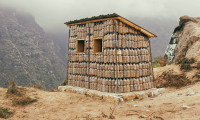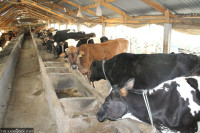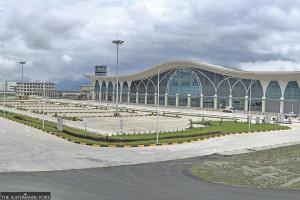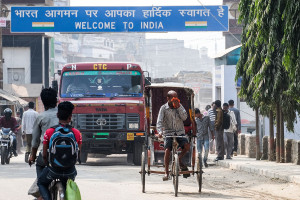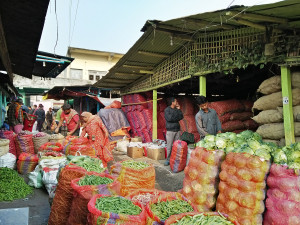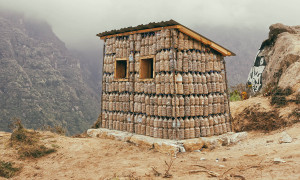Money
Despite massive blow to economy from Covid-19, government aims for 7 percent growth
The government’s target is overly ambitious and unrealistic, say experts, especially as the full impacts of the Covid-19 pandemic have yet to be felt.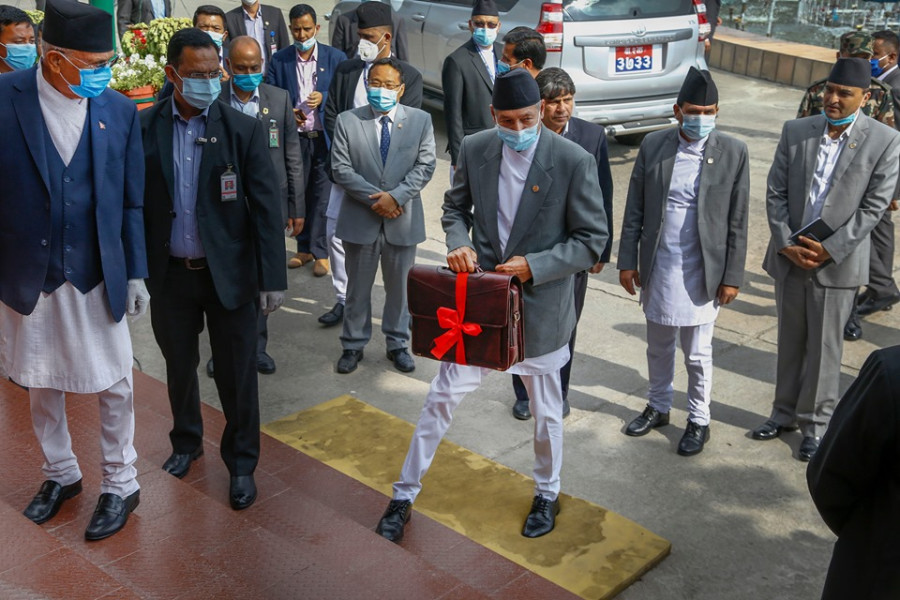
Sangam Prasain
When most global economies are trimming their growth projections due to the economic depression caused by the Covid-19 pandemic, Nepal has bucked the trend, with Finance Minister Yubaraj Khatiwada setting a highly ambitious target of 7 percent growth.
“The economy will grow by almost 7 percent, the rate that we have achieved in the past three years, once the lockdown restrictions are lifted,” Khatiwada told a joint session of the federal parliament while presenting the budget for the upcoming fiscal year 2020-21 on Thursday.
Economists are unconvinced.
Nepal's economy is headed for a catastrophe with no end in sight to a months-long paralysis as the lockdown keeps getting extended, they say. Even bigger threats could be looming, as the lockdown could trigger unpredictable consequences, even as forecasters struggle to figure out where exactly the country's economy stands right now.
“The growth target for the next fiscal year is overly ambitious,” said Ram Sharan Mahat, a former finance minister from the Nepali Congress. “The consequences of the virus will continue well into the next fiscal year.”
Mahat described the budget as “full of promises and aspirations”.
The Rs 1.47 trillion financial plan, which is around 4 percent smaller than the current budget, has earmarked Rs 948 billion for recurrent expenditure, Rs 352 billion for capital expenditure, and Rs 172 billion for financing provisions.
Khatiwada’s 7 percent growth ambitions, however, come on the heels of the Central Bureau of Statistics’ projection last month that Nepal’s economy will grow at 2.27 percent this fiscal year, ending mid-July, a massive deceleration from the government’s projected 8.5 percent target.
“The entire budget speech is focused on ‘we are doing this and we are doing that’. That’s not a budget. These are just unrealistic promises that are unimplementable,” Mahat told the Post. “The focus should have been on economic recovery rather than eyeing such an ambitious growth target.”
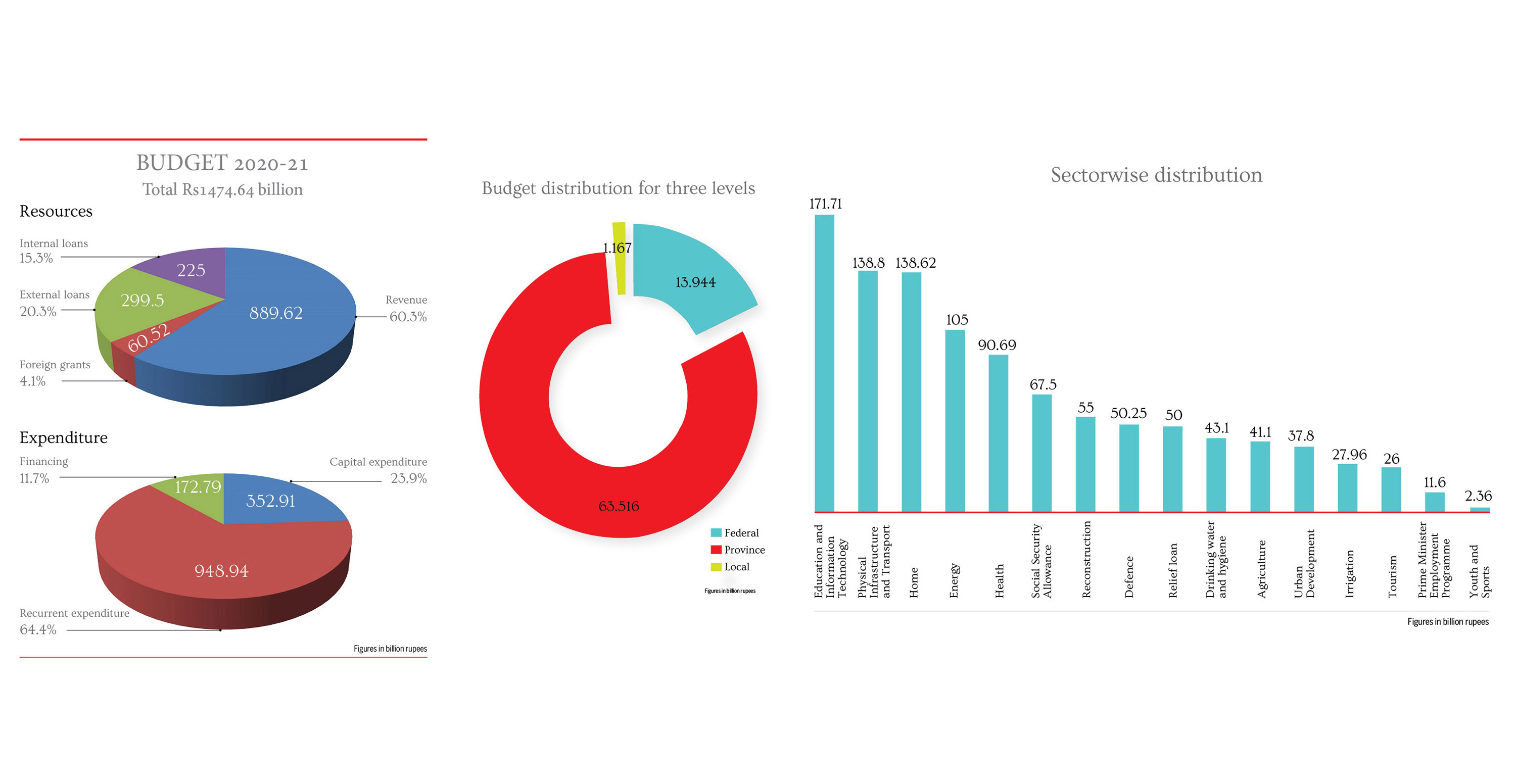
The budget has also failed to account for a number of critical conditionalities, including the fact that thousands of migrants are going to return home in the wake of a global recession, say economists.
According to Shankar Sharma, former vice-chair of the National Planning Commission, the budget focuses on health and employment, seemingly forgetting that thousands of migrants are returning and feeding them all will be a problem.
“There are no concrete programmes to address the food deficit,” said Sharma.
But Sharma, along with former attorney general and former finance secretary Bhanu Acharya, agreed that the 7 percent growth rate was overly optimistic, especially with the same programmes.
Acharya, however, called the reduction in the size of the budget a wise decision as it is going to be difficult to raise resources in the next fiscal year.
“It’s probably the first time in history that the budget size has been reduced,” he said. “The priorities are right in the current context but I am doubtful if the Health Ministry will be able to spend such a large amount as the spending capacity of the government mechanism has not been improved for years.”
Khatiwada has announced Rs90.69 billion for the health sector, up 32 percent from Rs68.78 billion for the current fiscal year. An increase in the budget for the health sector was largely expected, given the pandemic that has claimed five lives and infected over 1,000 in the country.
According to Acharya, there is not much to complain about when it comes to economic packages for the private sector, particularly the small and medium enterprises.
“But the finance minister could have done better by reducing corporate income tax to some extent, given that Nepal needs more investment,” he said. “India has already lowered its corporate income tax to 20 percent.”
To fund expenses for the next fiscal year, Khatiwada said that the government is planning to raise Rs 889.62 billion in tax and non-tax receipts. Rs 60.52 billion will come through foreign grants while the resulting deficit of Rs524.50 billion will be financed through foreign loans of Rs299.50 billion and domestic loans of Rs225 billion.
“Domestic loans mean that the government has to rely on Nepali banks,” said Mahat, the former finance minister. “If the banks fund the government, there will be no liquidity left for the private sector to invest.”
Analysts were cautious about welcoming the budget, pointing to its ‘populist’ nature and the lack of tangibles to support what seems like an unrealistically high goal.
Job creation is a focus for the government, as tens of thousands of Nepalis are set to return from foreign countries, especially India, Malaysia, South Korea and those in the Persian Gulf.
“The government has envisioned creating thousands of jobs next fiscal year, but there is no proper way to document how many jobs will be created by the public sector,” said Mahat.
Khatiwada said that Rs20 billion has been allocated towards generating 600,000 jobs. The budget for the Prime Minister's Employment Programme has been doubled to Rs11.60 billion that will provide jobs to 200,000 people, the budget statement reads.
“Rs 4.34 billion has been allocated to provide skills training for 75,000 individuals,” said Khatiwada.
The government plans to generate 150,000 jobs by mobilising seed money worth Rs19 billion from the Poverty Alleviation Fund through a cooperative model.
In light of the Covid-19 pandemic, the government has announced a financial package worth Rs150 billion, which is 4 percent of the country's GDP, to offset the negative impacts of Covid-19 and the subsequent lockdown.
Rs500 million has been allocated to provide subsidies on interest for people starting new businesses.
“The government will charge only 2 percent of interest on loans for start-ups,” said Khatiwada.
The budget has continued with many ongoing projects while introducing few new ones. Rs12.21 billion has been allocated to upgrade the East-West Highway to an Asian highway standard.
The budget has announced the construction of the Dudhkoshi reservoir hydropower project with financial support from four donors. Khatiwada said that 1,300 MW of electricity will be added to the national grid in the next fiscal year.
The budget announces that Nepal will be producing clothes and shoes domestically for security personnel, and will become self-sufficient in food production. Consequently, the government has increased the budget for state-subsidised chemical fertiliser from Rs9 billion to Rs11 billion and announced the construction of 200 food storage facilities.
In its policies and programmes, the government had emphasised the agriculture sector.
“We will be spending big in the agriculture sector as the government plans to make farm activities a major employment generating sector,” the policies and programmes read. But as usual, the agriculture sector remained the least priority sector with a budget allocation of just Rs 41 billion, which is less than 4 percent of the total estimate.




 7.12°C Kathmandu
7.12°C Kathmandu
